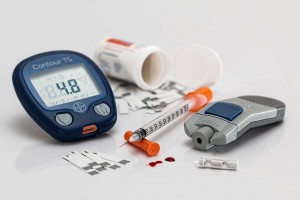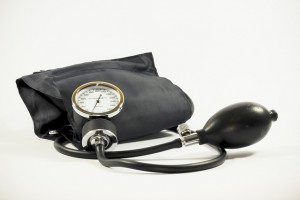Wellness | Health Tips
Diabetes

Diabetes, also known as diabetes mellitus, is a disease in which a person has a abnormally high blood glucose (blood sugar) level, either caused by insulin production that is inadequate, the body’s cells does not respond properly to insulin, or both. Patients with high blood sugar will typically experience frequent urination and they will become increasingly thirsty and hungry.
Diabetes is a Metabolism Disorder
Diabetes is classified as a metabolism disorder. Most of the food that our bodies digest is broken down into glucose which is a form of sugar in our blood that we need as “fuel” for our bodies.
The glucose (sugar), that is formed after our food was digested, enters our bloodstream, because our cells needs the glucose for growth and energy, but the glucose (sugar) cannot enter our cells without the presence of insulin as the insulin enables our cells to be able to take in the glucose.
The pancreas, which produces the hormone insulin, automatically releases a sufficient amount of insulin, after eating, so that the glucose in our blood is able to move into our cells. The level of our blood-glucose drops as soon as the glucose in our blood enters our cells.
Some people have a condition where their bodies either does not produce a sufficient amount of insulin, no insulin or they may have cells which does not respond to the insulin that the pancreas produces, because of this, the level of glucose in the blood is too high and this condition is known as, diabetes.
There are 4 different types of diabetes
- Type 1 Diabetes
- Type 2 Diabetes
- Gestational Diabetes
- Other specific types (such as genetic syndromes, surgery, drugs, malnutrition, infections and other illnesses)
Risk factors for diabetes:
- Age
- Obesity
- Family history
- Physical inactivity
- Impared glucode tolerance
- Certain ethnic and racial groups
What are the symptoms for diabetes?
- Constant thirst
- Increases hunger
- Urinating more than usual
- Numbness/tingling in finger tips and toes
- Unexplained weight loss
- Blurred vision or visual disturbances
- Skin infection due to slow wound healing
- Constant tiredness
Hypertension (High Blood Pressure)

High blood pressure is known as the ‘silent killer’ as there are rarely visible symptoms. Two out of three people with high blood pressure are unaware of the condition.
What is high blood pressure?
Your blood pressure is the force exerted by your heart, against the resistance created by the arter- ies, to keep blood flowing throughout the body. Your blood pressure is high (hypertension) when the force is excessive.
At what level is blood pressure high?
| Top Number (Systolic) | Bottom Number (Diastolic) | Stage |
|---|---|---|
| 100-129 | 65-84 | Normal |
| 130-139 | 85-89 | Normal High |
| 140-159 | 90-99 | Stage 1 (Mild) |
| 160-179 | 100-109 | Stage 2 (Moderate) |
| 180-209 | 110-119 | Stage 3 (Severe) |
| 210+ | 120+ | Stage 4 (Very Severe) |
What harm does high blood pressure do?
High blood pressure sufferers may feel perfectly well for years but they are at risk of damaging their arteries and vital organs.
High blood pressure can lead to a heart attack or stroke (brain attack) and affect other parts of the body such as the eyes (glaucoma, blindness), kidneys (kidney disease and failure) and peripheral vascular disease (circulation problems in which the arteries that carry blood to the legs or arms become narrowed or clogged).
Risk factors for high blood pressure:
- A family history of high blood pressure.
- An unhealthy diet, including excessive salt intake.
- Excessive alcohol consumption.
- Being overweight.
- Physical inactivity – lack of exercise.
- Stress – stress levels are hard to measure and responses to stress vary from person to person.
- Ethnic groups
- Age
- Pregnancy
- Certain medications such as birth control pills, steroids and anti-inflammatory drugs.
- Diseases such as kidney disease.
- Smoking.
